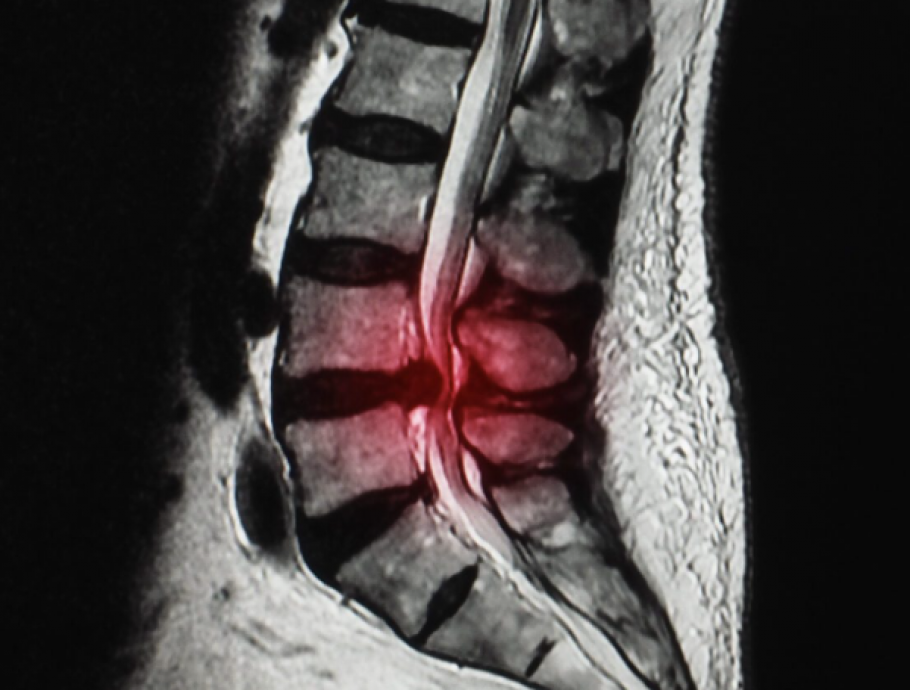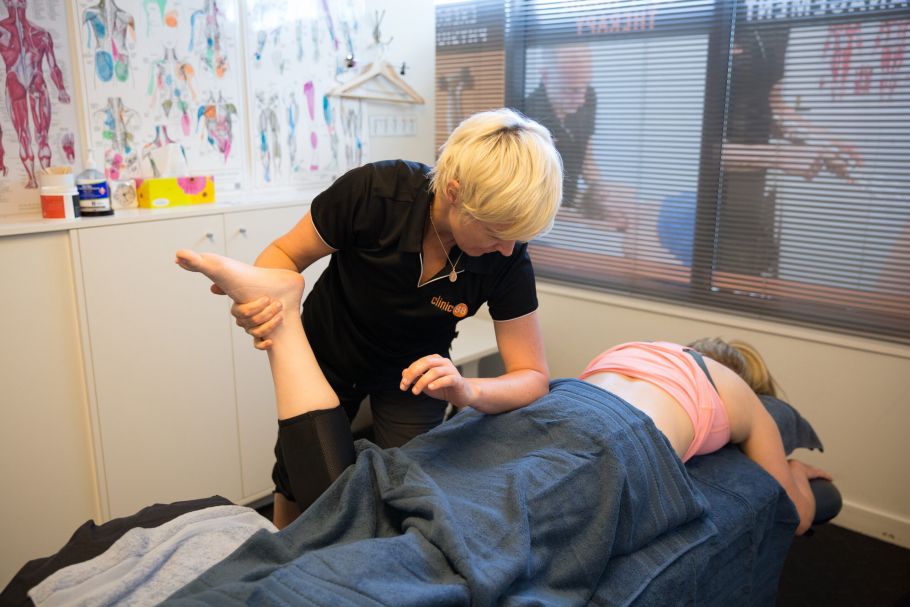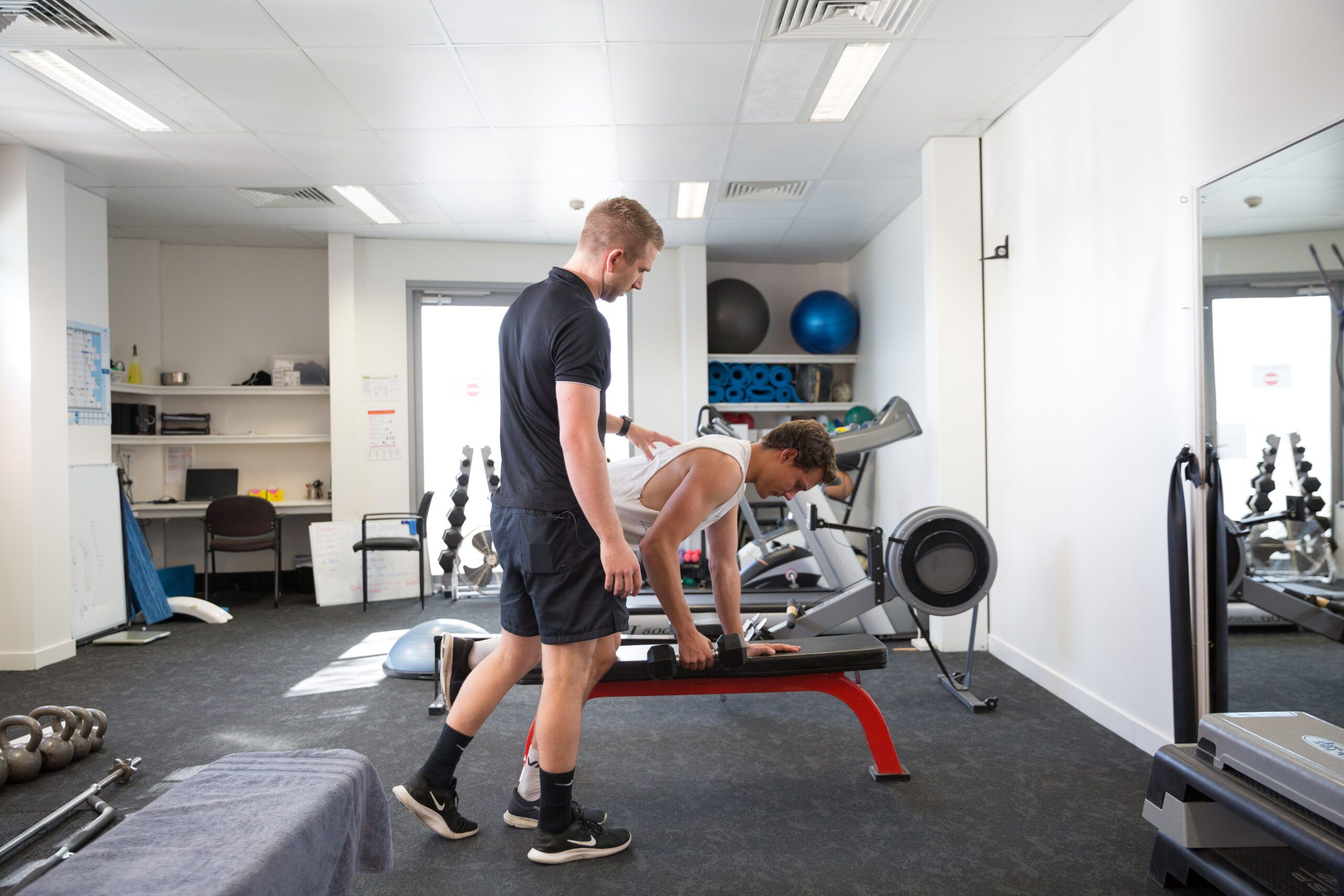Sciatica: Understanding the Condition, Symptoms, and Manual Therapy Treatment Options
What is Sciatica?
Sciatica is a common condition characterised by pain that radiates along the path of the sciatic nerve, which branches from your lower back through your hips and buttocks and down each leg. It typically affects only one side of the body. The underlying cause of sciatica is usually pressure on or irritation of the sciatic nerve, most often as a result of a herniated disc, bone spur on the spine, or narrowing of the spine (spinal stenosis). This pressure can lead to inflammation, pain, and sometimes numbness in the affected leg.
The term “sciatica” is often used to refer to any pain that originates in the lower back and travels down the leg. However, true sciatica is specifically linked to nerve root involvement, and it manifests as a collection of symptoms that can vary in intensity from mild to severe.

Symptoms of Sciatica
The symptoms of sciatica can be diverse and may vary from person to person, depending on the root cause and severity of nerve involvement. Typical symptoms include:
- Pain radiating from the lower back to the buttock and down the back of one leg: This is the hallmark symptom of sciatica. The pain can extend as far down as the foot or toes.
- Burning or tingling sensation: Some people describe the pain as a burning or tingling (“pins and needles”) feeling, rather than a dull ache.
- Numbness or weakness: The affected leg or foot may feel weak, numb, or difficult to move.
- Sharp or shooting pain: Movements such as standing up, walking, sitting for long periods, or sudden motions (like sneezing or coughing) can exacerbate the pain, causing it to shoot down the leg.
- Unilateral symptoms: Sciatica usually affects only one side of the body, though in rare cases, both sides can be involved.
- Difficulty controlling the leg: In severe cases, there may be difficulty with walking, standing, or controlling the leg muscles.
It is important to note that while back pain is often present, the defining feature of sciatica is leg pain that is worse than the back pain.


What Causes Sciatica
Sciatica can be caused by a variety of spinal conditions that impinge on the sciatic nerve roots. Some common causes include:
- Herniated or protruding disc: The soft, gel-like centre of a spinal disc bulges out and presses on the nerve roots.
- Spinal stenosis: The spinal canal narrows, compressing the nerves.
- Degenerative disc disease: Age-related changes cause the discs to break down and lose height and elasticity, sometimes pinching nerves.
- Spondylolisthesis: One vertebra slips over another, putting pressure on the nerve.
- Piriformis syndrome: The piriformis muscle in the buttocks irritates the sciatic nerve.
- Trauma or injury: Direct impacts, falls, or accidents can cause nerve compression.
- Tumours or infections: Very rarely, growths or infections near the lower spine can affect the sciatic nerve.
What can mimic Sciatica?
Several conditions can produce symptoms similar to sciatica, making accurate diagnosis essential for effective treatment. These “mimics” share features such as leg pain, numbness, or weakness, but have different underlying causes:
- Piriformis Syndrome: Compression or irritation of the sciatic nerve by the piriformis muscle in the buttock can cause symptoms much like sciatica.
- Peripheral Neuropathy: Conditions such as diabetes or vitamin deficiencies can damage nerves and cause pain, tingling, or numbness in the legs, often mistaken for sciatica.
- Hip Joint Disorders: Arthritis, bursitis, or labral tears in the hip can refer pain to the thigh or leg, sometimes mimicking sciatic pain.
- Sacroiliac Joint Dysfunction: Inflammation or dysfunction in the sacroiliac joint can produce pain radiating into the buttock and leg.
- Vascular Problems: Conditions such as deep vein thrombosis (DVT) or peripheral artery disease (PAD) can result in leg pain or cramps that resemble sciatica.
- Referred Pain from the Pelvis or Abdomen: Issues such as endometriosis, pelvic tumours, or abdominal aneurysms can cause pain that radiates into the leg.
- Muscle Strains or Ligament Sprains: Injuries to muscles or ligaments in the lower back, buttocks, or legs can sometimes mimic the patterns of sciatic pain.
- Muscle Trigger Points: Certain muscles like Gluteus Minimus (hip muscle) and piriformis have trigger point referred pain patterns that are very similar to Sciatica, although they shouldn’t exhibit any tingling or numbness type sensations like Sciatica does
Because so many different issues can cause symptoms similar to sciatica, it’s important to consult with a qualified healthcare professional for a thorough assessment and accurate diagnosis before beginning any treatment.




What Treatment options are there
Manual therapy encompasses a range of hands-on techniques, The goal of manual therapy for sciatica is to relieve pain, improve mobility, and resolve underlying mechanical problems contributing to nerve irritation. Manual Therapy does not ‘fix’ Sciatica, this is a myth. It is impossible to reduce a bulging disc with manual therapy. Be very sceptical of those who profess they can.
Manual Therapy can be very successful with those ailments that mimic Sciatica. Trigger points, piriformis syndrome, Sacro Iliac Joint pain, all can be relieved with manual therapy.
1. Soft Tissue Mobilisation
This involves targeted massage and manipulation of muscles, tendons, and fascia to reduce tension, break up adhesions, and improve blood flow. For sciatica, soft tissue mobilisation focuses on the lower back, gluteal muscles, hamstrings, and piriformis, all of which can impact sciatic nerve function.
2. Joint Mobilisation
Therapists use gentle, controlled movements to mobilise spinal joints and restore normal range of motion. These techniques aim to reduce nerve compression and improve spinal alignment.
3. Neural Mobilisation
Also known as “nerve gliding” or “neurodynamics,” these techniques gently mobilise the sciatic nerve itself, helping to relieve tension and restore normal nerve movement. This can be particularly helpful if the nerve is “entrapped” by tight muscles or connective tissues. This will be done within the treatment session as well as given as home based exercises.
4. Muscle Energy Techniques
These are active techniques where the patient contracts specific muscles against resistance, helping to lengthen tight muscles and improve joint function. This approach may help alleviate contributing muscular imbalances in the pelvis and lower back.
5. Stretching and Strengthening Exercises
While not strictly manual therapy, guided stretching and strengthening exercises are often prescribed in conjunction with hands-on techniques. These exercises target the core, hips, and legs to restore balance and prevent recurrence. Strengthening is a very important component of rehabilitation. Without this component you may at risk at recurrence.
6. Education and Ergonomic Advice
Manual therapists often provide education on posture, body mechanics, and strategies for pain management. Advice may include modifications to daily activities, safe lifting techniques, and ergonomic adjustments at home or work.
7. Myofascial Release
Gently sustained pressure is applied to tight areas in the myofascial tissues, helping to relieve pain and restore movement. Myofascial release can be particularly useful for patients whose symptoms are triggered or worsened by soft tissue restrictions.
8. Dry Needling
Dry needling is a technique performed by trained practitioners where thin, sterile needles are inserted into trigger points or tight bands within muscles. For sciatica, dry needling can help release muscle tension, reduce pain, and restore normal function, especially in muscles like the gluteals and piriformis that often contribute to sciatic nerve irritation. This technique may be used alongside other manual therapy methods for enhanced relief.
9. Positional Stretches
These are a type of stretch that places your body in a position that should create more space for the nerve root that is being compressed.
10. Taping
Box Taping is a type of tape that creates lumbar (lower back) stability and reduces lower back muscle spasm and associated pain. It is often used in the initial phases of sciatic pain.
What to Expect From Manual Therapy
Manual therapy treatments are tailored to each individual, depending on the cause and severity of sciatica. Patients may experience relief after just a few sessions, while others may benefit from a longer course of care. In addition to in-clinic treatments, therapists usually provide home exercises and self-care strategies to enhance recovery.
Frequently Asked Questions
What is the fastest way to relieve sciatica pain?
Acute sciatica caused by disc bulges may improve with rest, ice or heat packs, and over-the-counter medications (as advised by your doctor). Gentle movement, stretching, taping and manual therapy can also help. For severe or persistent cases, it may be worth consulting a surgeon for their opinion, although even the worst cases will resolve within 8-10 weeks
Can manual therapy cure sciatica?
N0. Don’t be fooled by the social media hype. There is not such thing as a quick fix for proper sciatica. If Manual Therapy ‘fixes’ your sciatica then you probably didn’t have sciatica in the first place. There are plenty of conditions that cause pain down the back of your leg. Manual therapy can provide significant relief of sciatica symptoms and can also address some of the underlying mechanical causes.
Is sciatica a lifelong condition?
Not usually. Many people recover fully with conservative care, including manual therapy and exercise. However, some may have recurring episodes, especially if underlying risk factors are not addressed.
When should I see a doctor?
Seek immediate medical attention if you experience:
- Sudden, severe pain in your lower back or leg, accompanied by numbness or muscle weakness
- Loss of bladder or bowel control
These could indicate a more serious condition requiring urgent care.
How can I prevent sciatica from returning?
Adopting a healthy lifestyle, maintaining good posture, exercising regularly (especially hip, pelvis, lower back and core strengthening), and using proper lifting techniques can all help. Regular check-ups with a manual therapist can identify and address issues early.
How long does it take to recover from sciatica?
Most cases resolve within a few weeks to a few months, especially with proper care. The recovery time depends on the cause, severity, and adherence to treatment and self-care.
Can exercise make sciatica worse?
Certain movements or exercises may irritate the sciatic nerve and worsen symptoms. A tailored exercise program, designed by a professional, will prioritise safety and address your specific needs.
Is walking good for sciatica?
Yes, gentle walking can help improve circulation, reduce inflammation, and maintain mobility. However, avoid overexertion or any movement that increases your pain. If walking aggravates your symptoms, consult your therapist for advice.
Can sciatica affect both legs?
Sciatica typically affects only one leg, but in rare cases, both legs can be involved. If you experience pain, numbness, or weakness in both legs, seek a medical evaluation promptly.
Will I need surgery for sciatica?
The vast majority of sciatica cases resolve with conservative measures like manual therapy, exercise, and lifestyle changes. Surgery is considered only if there is severe nerve compression, loss of function, or if non-surgical treatments fail after an extended period.
What lifestyle changes can help prevent sciatica?
Maintaining a healthy weight, engaging in regular physical activity, practising good posture, and avoiding prolonged sitting are all helpful. Ergonomic adjustments at work and home can further reduce your risk.
Can I continue working with sciatica?
Most people with sciatica can continue working, sometimes with modifications to tasks or workstations. It’s important to avoid activities that aggravate symptoms. Your manual therapist can advise on workplace adjustments and safe movement strategies.
Are there foods or supplements that help with sciatica?
A balanced diet rich in anti-inflammatory foods (such as fruits, vegetables, and omega-3 fatty acids) may support overall nerve health. Some people find benefit from certain supplements, but always consult your healthcare provider before starting any new supplement regimen.